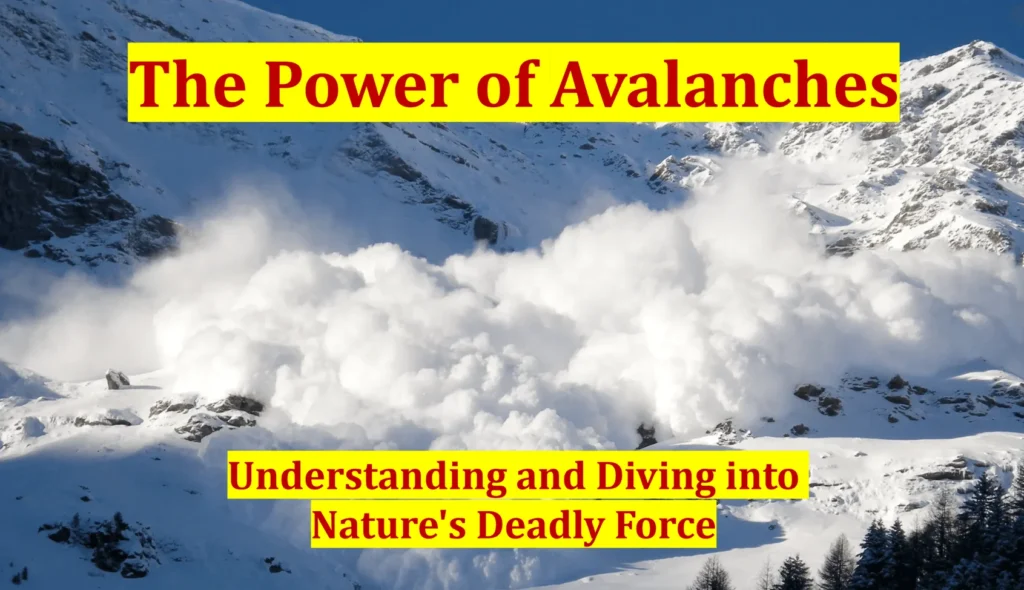
Introduction
Avalanches are one of nature’s most powerful and deadly forces, capable of wreaking havoc and devastation in a matter of seconds. Understanding the mechanisms behind these catastrophic events is not only fascinating but crucial for our safety and well-being. In this blog post, we will explore the definition and characteristics of avalanches, the devastating impacts they can have, and the importance of avalanche awareness.
What is an Avalanche?
An avalanche is a rapid and sudden flow of snow, ice, and debris down a mountainside. It occurs when a mass of snow detaches from a slope and cascades downhill under the force of gravity. Avalanches can vary in size and scale, ranging from small slides to massive walls of snow moving at incredible speeds.
Definition and characteristics of an avalanche
An avalanche is typically triggered by external factors, such as snowfall, wind, temperature, or human activities. These factors can disturb the balance of the snowpack, causing it to become unstable and prone to movement. When this happens, the snowpack fractures along weak layers, leading to a cascading failure that results in the release of an avalanche.
Avalanches exhibit distinct characteristics that make them particularly dangerous. The snow particles in an avalanche are often highly fragmented, making them denser and harder to navigate. The flow of an avalanche can reach speeds of up to 80 miles per hour (130 km/h) and exert tremendous force on anything in its path. The sheer volume and weight of snow can bury structures and individuals, making rescue operations challenging and time-sensitive.
Factors contributing to an avalanche
Several factors contribute to the occurrence and magnitude of avalanches.

- Snowfall plays a significant role as heavy accumulations can overload the snowpack, promoting instability.
- Wind can also play a crucial role by redistributing snow and forming wind slabs, which are dense and unstable layers prone to avalanching.
- Temperature fluctuations can weaken the snowpack and promote the formation of weak, brittle layers that fracture easily. Lastly, human activities such as skiing, snowboarding, and snowmobiling can introduce stress and vibration into the snowpack, triggering avalanches.
The Devastating Impact of Avalanches
Avalanches have a devastating impact, leaving behind a trail of destruction and loss. Understanding the destructive power they possess is crucial for mitigating their effects and ensuring public safety.
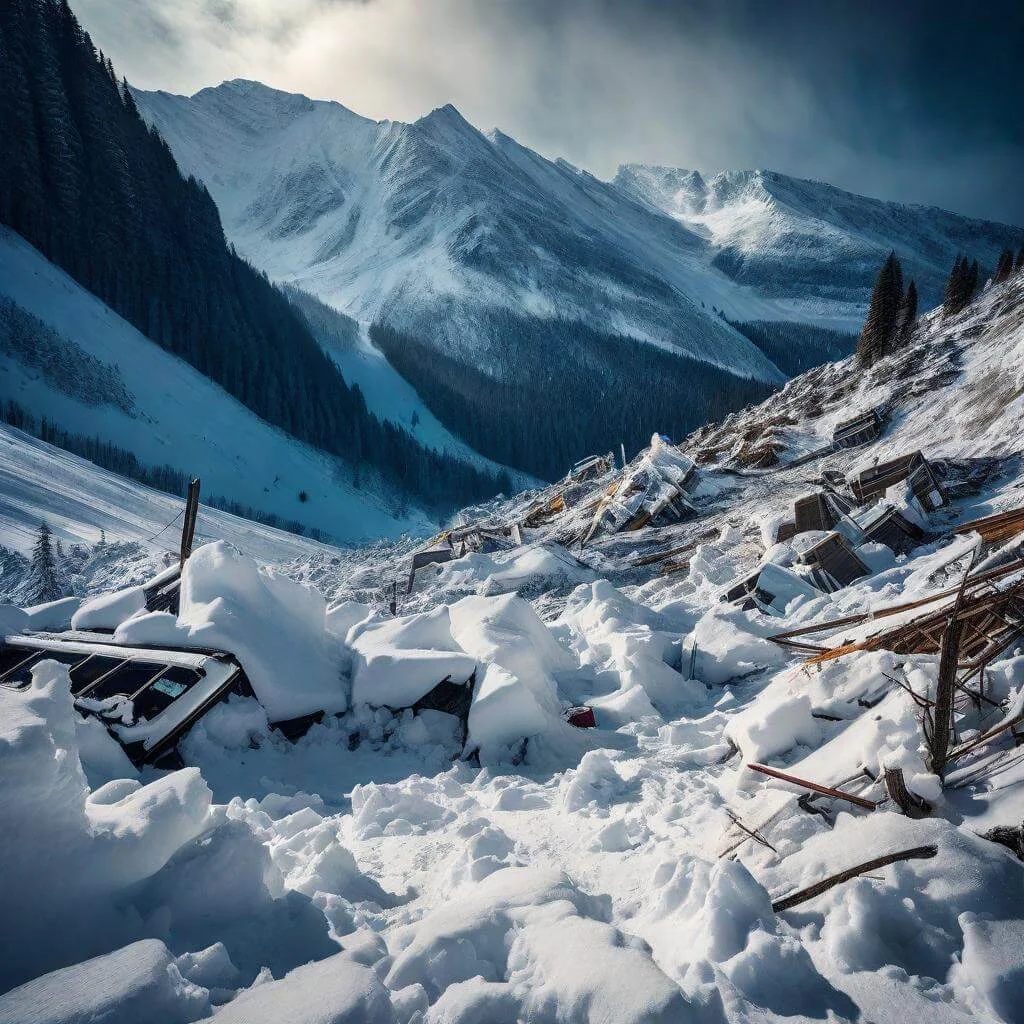
Avalanches possess an immense amount of destructive power, capable of demolishing even the most sturdy structures. The sheer force exerted by a moving avalanche can knock down trees, flatten buildings, and strip away entire forests. The pressure and weight of the snow can cause structural collapses, leading to significant damage and endangering lives.
Types of Avalanche
Loose Snow Avalanche
Loose snow avalanches are the most common type. They occur when a layer of loose, dry snow becomes unstable and slides downhill. These avalanches are often triggered by human activity or the weight of new snowfall. Although loose snow avalanches typically occur in cold mountainous regions, they can also happen in lower elevations during certain weather conditions.
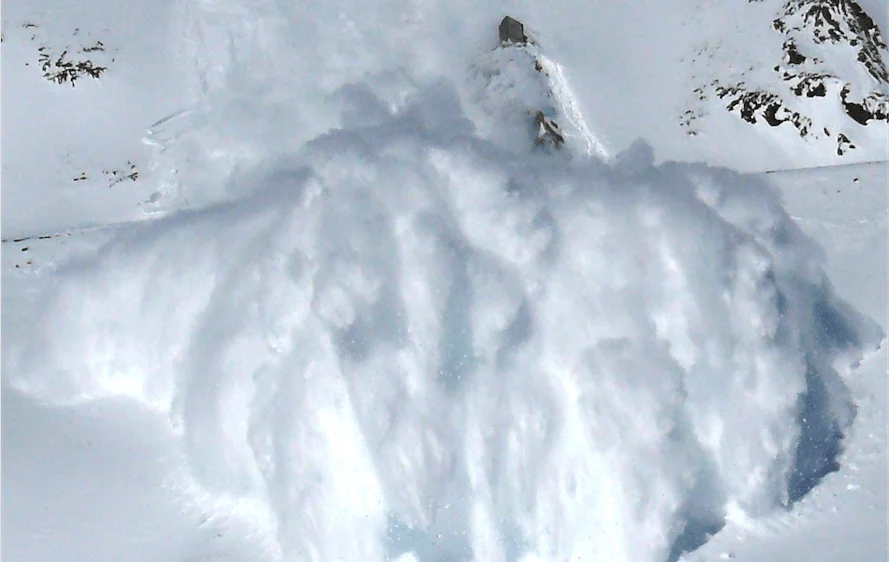
- Loose snow avalanches occur when cohesion among snow particles is weak.
- These avalanches can reach speeds of up to 80 miles per hour.
- One notable example of a loose snow avalanche was the tragedy that struck the Tunnel Creek ski area in Washington in 2012. A group of experienced skiers was caught in a massive loose snow avalanche, resulting in several fatalities.
Slab Avalanche
Slab avalanches are especially dangerous and responsible for the majority of avalanche-related deaths. They occur when a cohesive slab of snow breaks loose and slides downhill. Slab avalanches often happen on steep slopes, where a weak layer of snow is sandwiched between stronger layers. A disturbance, such as a skier, snowboarder, or even a loud noise, can trigger the collapse of the weak layer, causing the entire slab to slide.
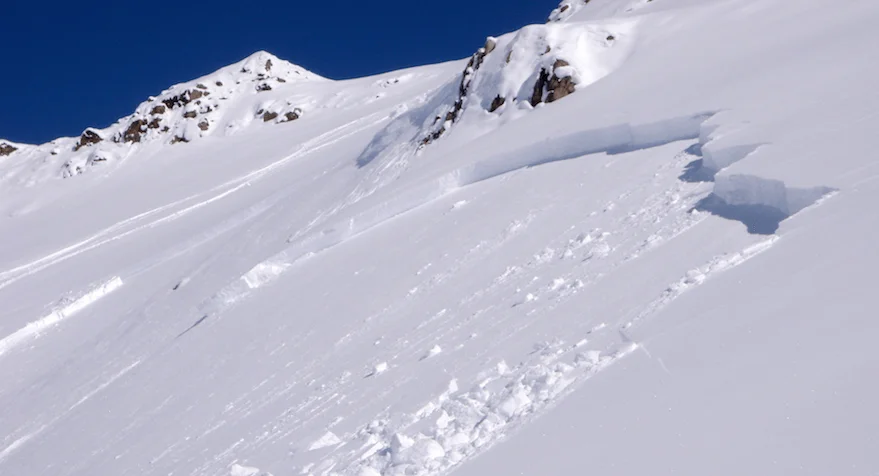
- Slab avalanches can travel at astonishing speeds, sometimes surpassing 100 miles per hour.
- These avalanches can release an enormous amount of energy upon impact, capable of destroying entire forests or burying buildings.
- In 1999, a tragic slab avalanche in Galtür, Austria, led to the loss of 39 lives and extensive property damage.
Powder Snow Avalanche
Powder snow avalanches occur when a layer of loose, dry snow is disturbed, causing a “cloud” of snow to travel downhill. These avalanches are often triggered by the passage of a skier or a snowmobile, disrupting the delicate balance of the snowpack. Powder snow avalanches are less predictable compared to other types and can vary significantly in size.

- Powder snow avalanches are known for their “billowing” effect, resembling a cloud of smoke.
- The fine, dry snow particles in these avalanches can make it challenging for victims to breathe or dig themselves out.
- The Tignes ski resort in France experienced a powder snow avalanche in 2017, resulting in the partial evacuation of the resort and fortunately no casualties.
Wet Snow Avalanche
Wet snow avalanches occur when warm temperatures or rainfall cause the snowpack to become saturated with water. This additional moisture weakens the snowpack’s stability, making it prone to sliding downhill. Wet snow avalanches are more common in the springtime when temperatures rise, but they can also happen in late winter during rainstorms.
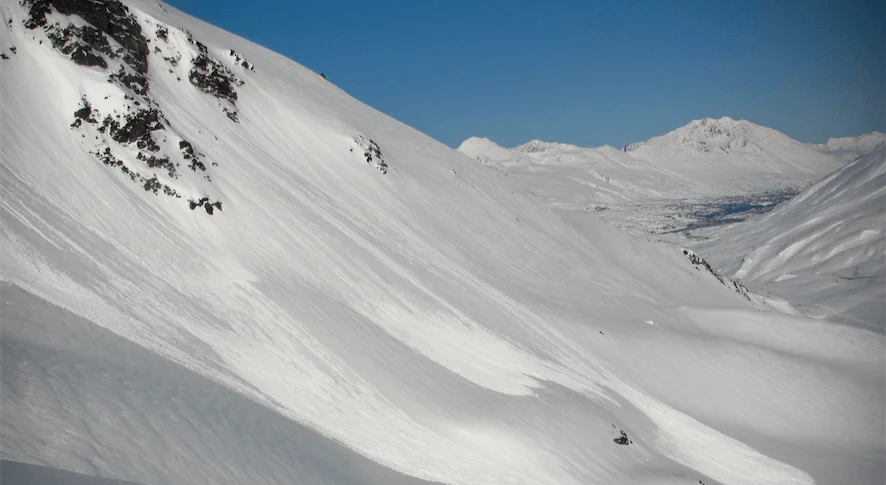
- Wet snow avalanches have a more fluid-like consistency compared to other types of avalanches.
- The wet snow can carry rocks, debris, and trees, making the avalanches even more destructive.
- In 1995, Alaska’s Chugach Mountains experienced a tragic wet snow avalanche that claimed the lives of seven heli-skiers.
Causes and Triggers of Avalanches
Avalanches are natural disasters that can unleash an unimaginable force, wreaking havoc and causing devastation in their path. Understanding the causes and triggers of avalanches is crucial to safeguarding lives and mitigating their destructive impact. In this section, we will delve into the two main factors that contribute to avalanche formation: weather patterns and natural conditions, as well as human activities and influences.
Weather Patterns and Natural Conditions
How do various weather factors contribute to avalanche formation?
Avalanches are essentially the result of a delicate balance between snow accumulation and stabilization. Weather plays a pivotal role in the intricate dance of snowpack dynamics. Low temperatures, heavy snowfall, and wind patterns can all significantly impact avalanche formation.
As temperatures drop, the snow crystals undergo metamorphosis, transitioning from soft, fluffy flakes to hard, compact layers. This process, known as “sintering,” creates a stratified snowpack that can act as a potential weak layer. Additionally, rapid temperature fluctuations, such as freeze-thaw cycles, can weaken the snowpack’s cohesion, making it more susceptible to avalanches.
Heavy snowfall, especially when accompanied by high wind speeds, can overload the snowpack, exerting tremendous pressure on its layers. This excess weight can trigger a failure within the snowpack, leading to a cascade of snow roaring down the mountainside.
Identifying dangerous snowpack conditions
Spotting hazardous snowpack conditions is essential for preventing avalanches. Avalanche professionals use various methods to assess the stability of snowpack, including snowpit analysis, stability tests, and observations of surface conditions.
During snowpit analysis, experts dig a pit in the snowpack to examine its layers and study their bonding properties. By carefully analyzing the stratigraphy and conducting stability tests, such as the extended column test or the compression test, they can gain valuable insights into the snowpack’s stability.
Observing surface conditions is also crucial in identifying potentially hazardous snowpack layers. Cracking and collapsing of the upper snow layers, commonly referred to as “whoomphing,” indicate the presence of unstable conditions. By looking for signs of recent avalanche activity, such as fresh debris or fracture lines around the mountainsides, professionals can determine areas prone to avalanches.
Human Activities and Influences
Exploring human activities that can trigger avalanches
While nature sets the stage for avalanches, human activities can unwittingly become the catalysts. Skiing, snowboarding, or even mountaineering in avalanche terrain can put individuals and their companions at risk. The added weight and motion of human beings can potentially initiate an avalanche if the snowpack is already unstable.
Furthermore, snowmobiling and other mechanized activities on steep slopes can trigger avalanches due to the vibrations they generate. Even seemingly harmless actions like walking on unstable snow slopes can be enough to cause a fracture within the snowpack, leading to an avalanche.
The role of snowpack disturbances and their impact
Beyond direct human activities, snowpack disturbances caused by infrastructure development, such as roads and buildings, also contribute to the occurrence of avalanches. The construction of highways or ski resorts can disrupt the natural equilibrium of the mountain environment, altering snow distribution patterns and destabilizing slopes.
Another aspect to consider is the impact of backcountry enthusiasts, who traverse off-piste areas seeking untouched powder. These activities can disturb the snowpack, potentially affecting its stability and increasing the risk of triggering avalanches.
Avalanche Forecasting and Prediction
Overview of avalanche forecasting techniques
Avalanche forecasting aims to provide valuable information about the likelihood and potential size of avalanches. It involves meticulous monitoring, data analysis, and expert judgment to create accurate forecasts. Although it is a complex task, several techniques have been developed to aid in this endeavor.
Snowpack observations, such as snowpit tests and stability evaluations, form the foundation of avalanche forecasting. These field observations, combined with data obtained from weather stations and remote sensing devices, contribute to an extensive database that guides forecasters in assessing current snow conditions.
Numerical snowpack models and statistical analyses play a crucial role in integrating various data sources and generating forecasts. These models use complex algorithms to simulate snowpack behavior under different weather scenarios, helping forecasters understand the potential for avalanches.
Understanding the role of experts and their predictions
Avalanche experts, with their extensive knowledge, experience, and intuition, play a vital role in avalanche prediction. By combining scientific analysis with on-the-ground observations, they can provide valuable insights and guidance to individuals venturing into avalanche-prone areas.
While avalanche forecasts provide essential information, it is crucial to recognize the inherent uncertainty associated with predicting nature’s forces accurately. Experts continuously balance the available data, historical patterns, and their judgment to outline the potential risks and advise on safe practices.
Case Studies of Avalanche Disasters
To fully comprehend the devastating impact that avalanches can have, let’s explore some historical avalanches and notable avalanche disasters throughout different regions of the world.
Historical Avalanches and Their Impact
The Alpine region, the Himalayas, and the Rockies have experienced numerous historical avalanches with significant consequences. The Alps, for example, have witnessed avalanches that engulf entire villages, causing extensive damage and loss of life. These catastrophic events have shaped the way we understand avalanches and the importance of implementing effective risk assessment and mitigation measures.
Similarly, the Himalayas, with their towering peaks and heavy snowfall, have seen devastating avalanches that have claimed the lives of mountaineers and local communities alike. The remote and harsh terrain makes rescue and relief operations challenging, highlighting the immense power and danger associated with Himalayan avalanches.
Just recently on February 8th, 2024, a colossal avalanche wreaked havoc in the Sonamarg area along the Srinagar-Leh Highway, India. Officials have confirmed the event, emphasizing the sheer force unleashed by nature. Thankfully, no loss of life has been reported thus far, a small mercy amidst the chaos. The avalanche struck perilously close to the workshop designated for the construction of the Zojila tunnel in Sonamarg, though fortunately, no significant damage occurred.
In response to the recent heavy snowfall experienced in the region during the first week of February, authorities have issued a stern avalanche warning for the higher reaches of the Kashmir valley. This precautionary measure underscores the ongoing threat posed by avalanches, serving as a stark reminder of the inherent risks associated with life in these breathtaking yet treacherous mountain ranges.
In the Rockies, where spectacular mountains stretch for miles, avalanches pose a constant threat. Historical avalanches in this region have caused highway closures, disrupted transportation networks, and have sadly led to fatalities. These incidents have cemented the need for ongoing research and improved safety measures to protect vulnerable communities in avalanche-prone areas.
Notable Avalanche Disasters and Their Aftermath
The Galtür avalanche of 1999 stands as a grim reminder of the destructive force of avalanches. Striking the Austrian village of Galtür, this catastrophic event claimed the lives of 31 people and led to the evacuation of the entire village. The aftermath of the avalanche prompted substantial changes in avalanche monitoring and mitigation strategies in the region, ensuring better preparedness and greater protection for communities.
Another notable avalanche disaster took place at Stevens Pass in 1910, in the Cascade Mountains of Washington, United States. Triggered by heavy snowfall and unstable snowpack, this avalanche struck a train carrying passengers, resulting in one of the deadliest avalanches in US history. This tragedy sparked a significant outcry for better avalanche forecasting, snowpack monitoring, and safer transportation routes, shaping modern avalanche safety practices.
Environmental and Ecological Implications
Avalanches shape the landscapes they occur in, leaving a lasting impact on the environment. Let’s take a closer look at the long-term effects of avalanches on landscapes and ecosystems.
Long-term effects of avalanches on landscapes and ecosystems
When avalanches occur, they bring about drastic changes in the affected areas. Powerful masses of snow hurtle down slopes, uprooting trees, eroding soil, and modifying the terrain. This results in the creation of distinct avalanche paths and deposition areas. Over time, these paths may become visible scars on the landscape.

The displaced snow and debris from avalanches can bury vegetation, affecting plant succession. While some plants may benefit from the increased nutrients brought by the snow deposition, others struggle to adapt, leading to changes in plant diversity and composition. Ecologists have observed that post-avalanche areas often undergo a process of natural regeneration, revealing the resilience of ecosystems in the face of such disturbances.
Role of avalanches in natural ecosystem processes
Avalanches play a crucial role in natural ecosystem processes, particularly in mountainous regions. By clearing forests and opening up space, avalanches create opportunities for new plants to colonize the landscape. Additionally, the deposition of snow enriches the soil, contributing to increased soil fertility in these areas. This, in turn, benefits subsequent vegetation growth and nutrient cycling within the ecosystem.
Furthermore, avalanches support the dynamics of wildlife populations. As vegetation changes, herbivores may adapt their feeding patterns, causing a ripple effect within the food web. For example, areas with increased open space due to avalanches may attract ungulates, which, in turn, can support the populations of predators that rely on these herbivores.
Challenges of ecosystem recovery and rehabilitation after avalanches
While avalanches are a natural part of mountain ecosystems, the path to recovery and rehabilitation after such events can be challenging. The severity and frequency of avalanches can significantly impact the time it takes for ecosystems to recover. Steep slopes and high-altitude environments may hinder the regrowth of vegetation, further delaying the restoration process.
Furthermore, the introduction of non-native plant species during the recovery phase can pose a threat to the re-establishment of native flora. This can lead to imbalances in the ecosystem, affecting the diversity and functioning of these delicate environments. Ecosystem recovery efforts must carefully consider these challenges to ensure the long-term health and resilience of the affected areas.
Climate Change and Avalanches
Climate change is causing significant disruptions to our planet, and avalanches are not exempt from its effects. Let’s explore the impact of climate change on snowpack dynamics, avalanche frequency, and the implications for avalanche risk management.
Impact of climate change on snowpack dynamics
As temperatures rise due to climate change, snowpack dynamics are undergoing noticeable shifts. Warmer temperatures can lead to increased melting and decreased snowfall, altering the stability of snowpacks. These changes affect the likelihood and intensity of avalanches, potentially increasing the frequency of these destructive events in some regions.
Scientists have observed variations in snowpack characteristics, such as changes in snow density and the formation of weak layers. These factors contribute to the instability of snowpacks, increasing the risk of avalanches. Understanding these dynamics is crucial for mitigating the dangers of avalanches and developing effective risk management strategies.
Shifts in avalanche patterns and behavior
Climate change is also impacting weather patterns, which, in turn, influence avalanche occurrences and behavior. Changes in precipitation patterns, including rain at higher elevations, can destabilize snowpacks and trigger avalanches. Additionally, fluctuations in wind patterns can alter the distribution and accumulation of snow, further affecting avalanche patterns.
It is essential to monitor these shifts in avalanche behavior to adapt existing avalanche risk management practices effectively. Keeping up with evolving weather patterns and their influence on avalanches is key to ensuring the safety of communities residing in mountainous regions.
Implications for avalanche risk management and adaptation strategies
Managing the risks associated with avalanches in a warming climate presents unique challenges. Community-based efforts, supported by government agencies, rescue teams, and volunteer organizations, play a crucial role in avalanche preparedness and response. These collaborations foster knowledge sharing and the development of effective strategies to prevent avalanche-related incidents.
Investing in advanced monitoring technologies, such as remote sensing and early warning systems, can enhance the ability to predict and respond to avalanches. By combining scientific research, technological innovations, and local expertise, communities can adapt to changing avalanche patterns and reduce the potential impacts caused by these natural disasters.
Community Responses and Preparedness
Recognizing the importance of community engagement in avalanche safety is paramount. Let’s explore the role of community-based efforts, government agencies, and public awareness in promoting avalanche preparedness.
Importance of community-based efforts in avalanche preparedness and response
Communities living in avalanche-prone areas are at the forefront of avalanche preparedness and response. Local knowledge, experiences, and practices are invaluable in understanding the risks associated with avalanches and designing effective prevention measures. Community-based initiatives, such as awareness campaigns, training programs, and emergency response networks, empower individuals and groups to mitigate risks collectively.
Role of government agencies, rescue teams, and volunteer organizations in avalanche safety
Government agencies, rescue teams, and volunteer organizations play a critical role in ensuring avalanche safety. These entities provide essential resources, expertise, and coordination to support community efforts. They establish and maintain avalanche forecasting and warning systems, conduct search and rescue operations, and provide training on avalanche safety measures.
Collaboration between these entities and local communities is essential in developing comprehensive safety plans and responding promptly to avalanche incidents. The combined efforts foster a culture of preparedness and minimize the potential impacts of avalanches on human lives and infrastructure.
Avalanche Risk Assessment and Mitigation
Avalanches are one of nature’s most lethal forces, capable of causing immense destruction and loss of life. To mitigate these risks, understanding avalanche risk assessment techniques and implementing effective mitigation strategies are crucial. In this section, we will explore the various techniques for assessing avalanche risk and strategies for mitigating their devastating impact, as well as the importance of avalanche awareness and safety education for communities in avalanche-prone areas.
Techniques for Assessing Avalanche Risk
Assessing avalanche risk requires a multi-faceted approach that involves analyzing the snowpack and evaluating the terrain. Snowpack analysis involves studying the layers of snow and their stability characteristics. Snow scientists, known as snowpack analysts, gather data on snow density, temperature gradients, and the presence of weak layers that can trigger avalanches. This information is used to assess the likelihood of avalanche occurrence and the potential size and destructive power of the avalanches.
Terrain evaluation is equally important in assessing avalanche risk. Evaluating the steepness, aspect, and slope configuration of a particular area helps experts understand the terrain’s susceptibility to avalanches. Certain slopes and features, such as convex rolls or gullies, increase the likelihood of avalanche occurrence. By combining snowpack analysis with terrain evaluation, avalanche experts can determine high-risk areas and issue accurate avalanche forecasts and warnings.
Strategies for Avalanche Mitigation
Once avalanche risk is assessed, implementing effective mitigation strategies becomes crucial. Avalanche control measures aim to reduce the likelihood of triggered avalanches. One commonly used technique is snow artillery, where explosive charges are deployed to artificially trigger smaller controlled avalanches, releasing built-up snow before it accumulates and potentially forms a more massive and destructive avalanche. By triggering controlled avalanches during safe times, avalanche control teams can reduce the snowpack’s instability and minimize the risk to human settlements or infrastructure.
Another effective strategy for avalanche mitigation is the use of physical barriers. These can include snow fences, walls, or other structures designed to redirect or arrest avalanches. These barriers are strategically placed to prevent the buildup of snow on critical slopes or to redirect avalanche paths away from high-risk areas. By putting physical barriers in place, the destructive force of avalanches can be mitigated, protecting vulnerable communities and infrastructure.
The Importance of Avalanche Awareness
Avalanche awareness is crucial for anyone venturing into mountainous regions during winter months. Understanding the significance of avalanche awareness and adopting safety measures can save lives and prevent accidents.
Understanding the significance of avalanche awareness
Avalanche awareness involves educating individuals about the risks associated with avalanches, teaching them how to recognize danger zones, and providing them with the necessary skills to make informed decisions in the backcountry. By understanding the signs of an unstable snowpack, individuals can assess the potential avalanche hazards and take appropriate precautions. Avalanche awareness also extends to knowing how to use safety equipment, such as transceivers, probes, and shovels, which are essential in rescue operations.
Impacts on recreational activities and safety measures
The popularity of winter recreational activities, such as skiing and snowboarding, has increased the need for avalanche safety and awareness. Ski resorts and backcountry enthusiasts alike have implemented various safety measures to minimize the risk of avalanches. These measures include regular snowpack stability assessments, the establishment of controlled skiing areas, and compulsory avalanche safety courses for skiers and snowboarders. By adopting these safety measures, individuals can participate in winter sports while minimizing their exposure to avalanche hazards.
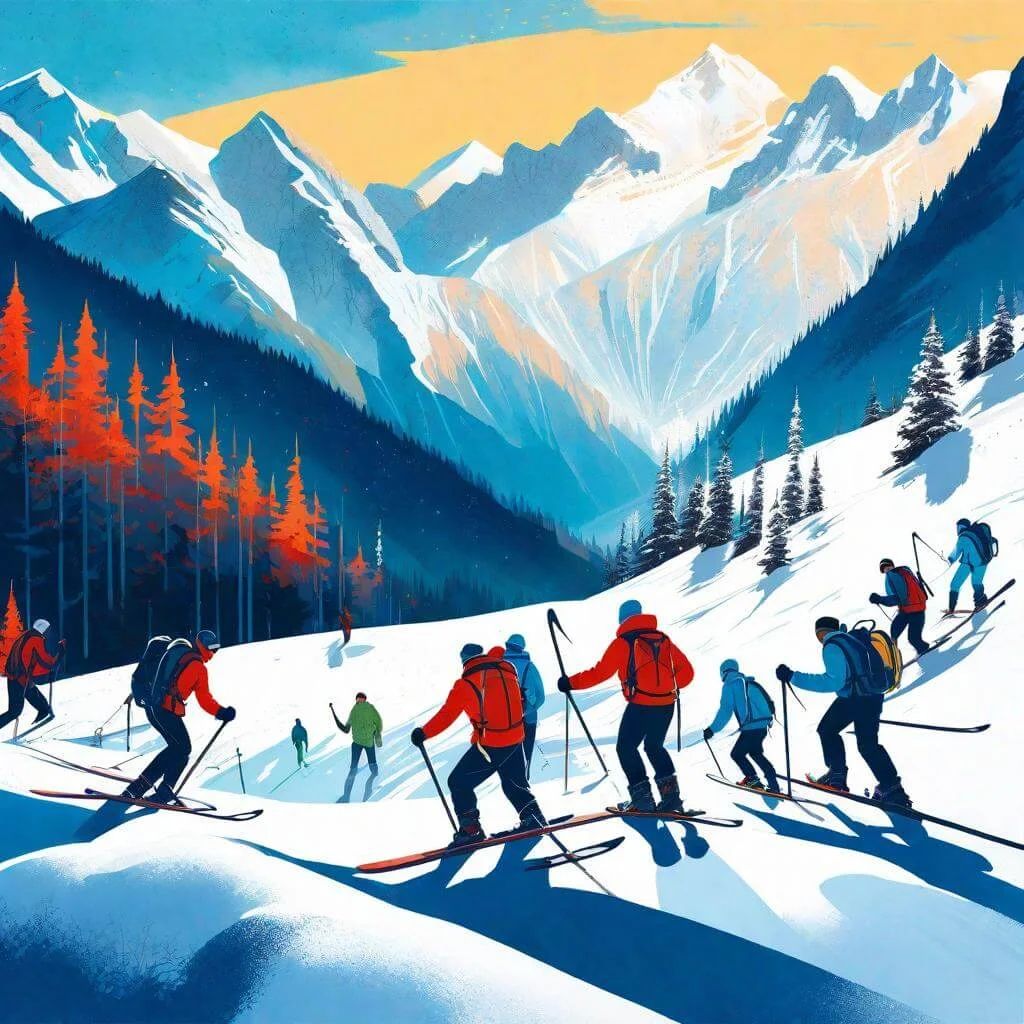
Avalanche Safety and Preparedness
Avalanches are one of nature’s most deadly and powerful forces. Understanding the risks associated with avalanches and knowing how to properly prepare for them is crucial for anyone venturing into avalanche-prone areas. In this section, we will explore the importance of avalanche education and training, essential gear and equipment for avalanche survival, as well as strategies for avalanche risk reduction.
Avalanche Education and Training
When it comes to the power of avalanches, knowledge is power. It is essential to undergo formal education and training to understand the nature of avalanches and how to navigate them safely.
The importance of formal education and training
- Formal education and training provide a solid foundation of knowledge and skills necessary for avalanche safety.
- Understanding avalanche formation, terrain analysis, weather patterns, and snowpack stability is crucial for making informed decisions in the backcountry.
“Proper education and training can mean the difference between life and death in avalanche-prone areas”
Available courses and certifications for avalanche safety
- Several organizations offer courses and certifications specifically designed to educate individuals about avalanche safety.
- The American Institute for Avalanche Research and Education (AIARE) provides a comprehensive curriculum that covers various aspects of avalanche education.
- AIARE offers courses suitable for beginners to experienced backcountry travelers, allowing individuals to progress their skills and knowledge over time.
Essential Gear and Equipment for Avalanche Survival
Having the right gear and equipment is essential for surviving an avalanche. Here is a list of necessary items for backcountry adventures:
List of necessary equipment for backcountry adventures
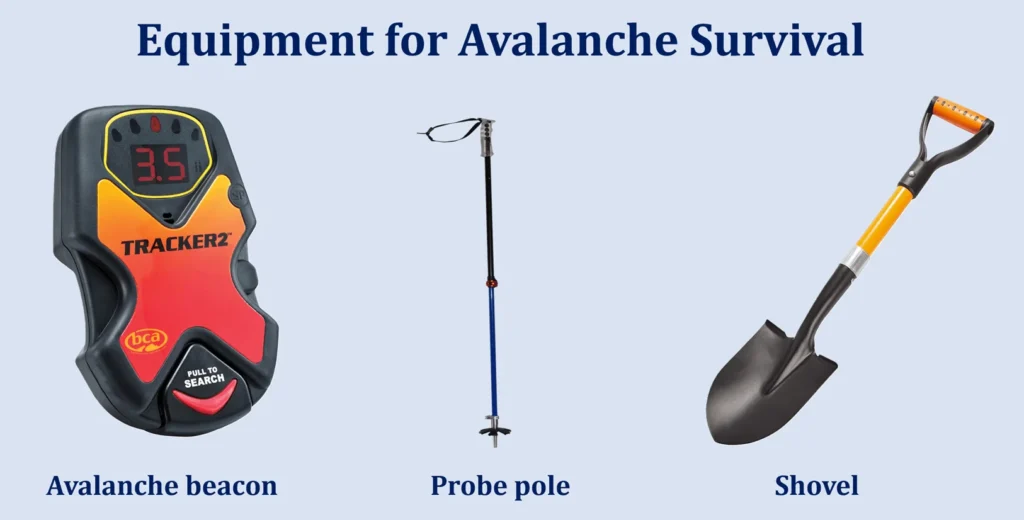
- Avalanche beacon: A beacon is a small electronic device that emits signals and helps locate someone buried in an avalanche. It is a crucial piece of equipment for any backcountry traveler.
- Probe pole: Used to determine the depth at which victims are buried in the snow, a probe pole is an essential tool for search and rescue operations.
- Shovel: A collapsible shovel allows victims to dig themselves out or rescue others who are buried in an avalanche.
How to properly use and maintain avalanche safety gear?
- It is not enough to simply own avalanche safety gear; one must also know how to use it effectively.
- Regular practice with your beacon and probe pole is essential to ensure familiarity in emergencies.
- Regular maintenance of equipment, such as checking batteries, ensuring proper function, and keeping gear clean, is crucial for optimal performance.
Strategies for Avalanche Risk Reduction
Reducing the risk of avalanches requires a combination of safe travel practices and mitigation measures. Here are some strategies to consider:
Identifying safe travel practices in avalanche-prone areas
- Studying weather forecasts and avalanche bulletins can help inform decision-making when planning backcountry trips.
- Understanding terrain features, such as slopes, cornices, and convexities, can help identify potential avalanche-prone areas to avoid.
Mitigation measures for personal safety and group dynamics
- Traveling one at a time on slopes, avoiding unnecessary exposure, and maintaining good communication within a group is crucial for avalanche safety.
- Establishing clear communication protocols and practicing effective decision-making as a group can help prevent risky situations.
“Mitigation measures can significantly reduce the likelihood of being caught in an avalanche, but they are no substitute for proper education and training.”
Responding to an Avalanche
Immediate Actions During an Avalanche
Avalanches are sudden and violent natural occurrences that demand quick decision-making and immediate response. Understanding how to react in these critical moments can significantly enhance survival chances.
Quick decision-making and initial response
When caught in an avalanche, time is of the essence. First, maintain composure and try not to panic. It is crucial to remember that avalanches move at incredibly high speeds, making it difficult to outski or outrun them. Instead, focus on the following immediate actions:
- Try to move to the side or grab onto a sturdy object, such as a tree or rock, to avoid being buried deep.
- Create an air space by cupping your mouth with a hand or an article of clothing to prevent suffocation.
- Use swimming motions to stay atop the surface of the moving snow, increasing your chances of being located during rescue operations.
Techniques for Enhancing Survival Chances
Surviving an avalanche requires a combination of knowledge, skills, and a bit of luck. Here are some techniques that can enhance your chances of survival:
- Deploy an avalanche airbag if you have one. These specialized backpacks can increase your volume and help keep you closer to the surface.
- Swim in a doggy-paddle motion or “breaststroke” to remain as buoyant as possible.
- Push away from large blocks of snow to create air pockets if you find yourself buried.
Rescue Operations and Techniques
Once an avalanche has subsided, rescue operations come into play. Time is crucial, as the chances of survival decrease rapidly after just a few minutes under the snow. Understanding rescue procedures, equipment, and methods used can make a significant difference.
Overview of avalanche rescue procedures
Rescue operations involve a systematic approach to locate and retrieve buried individuals. This typically includes the following steps:
- Activating emergency services and providing detailed information about the incident, such as the location and number of people involved.
- Organizing a team of trained rescuers equipped with specialized gear like beacons, shovels, probes, and avalanche search dogs.
- Conducting a methodical search using transceivers to locate buried individuals by emitting signals and receiving reflected signals from beacons worn by victims.
- Uncovering and extracting victims using shovels and probes, performing first aid, and transporting them to medical facilities as quickly as possible.
Post-Avalanche Considerations and Recovery
Surviving an avalanche is only the first step on a potentially long road to recovery. Physical injuries, trauma, and psychological effects can leave lasting impacts. It is essential to address these challenges and seek professional help when needed.
Dealing with injuries and trauma
Avalanche survivors may sustain injuries ranging from broken bones to hypothermia. It is crucial to prioritize medical attention and follow the advice of healthcare professionals. Common injuries include:
- Bone fractures
- Soft tissue injuries
- Frostbite
- Hypothermia
Recovery may involve surgery, physical therapy, and rehabilitation programs tailored to specific injuries.
Psychological recovery and seeking professional help
Avalanche incidents can have severe psychological impacts on survivors. Post-traumatic stress disorder (PTSD), anxiety, and depression are common after experiencing such a traumatic event. It is crucial to seek professional help to address these issues effectively. Mental health professionals experienced in trauma and crisis intervention can provide invaluable support during the recovery process.
Summary and FAQs
Recap of Key Points
Understanding the power of avalanches and how to respond is crucial for adventurers and those living in avalanche-prone regions. Here are the key takeaways:
- Quick decision-making during an avalanche includes seeking sturdy objects, creating an air space, and swimming motions for buoyancy.
- Enhancing survival chances involves utilizing avalanche airbags, swimming techniques, and creating air pockets.
Reiterating the significance of avalanche awareness and preparedness is essential for everyone venturing into avalanche terrain.
Concluding Words
Avalanches possess a formidable power that demands our understanding and respect. The devastating impact they have had on communities throughout history serves as a reminder of the destructive force of nature. The power of avalanches should never be underestimated. By understanding the intricate interplay of weather patterns, natural conditions, and human activities, we can better comprehend and predict these deadly forces. Through diligent avalanche forecasting and the expertise of professionals, we can strive to mitigate the risks associated with avalanches. By raising awareness, educating ourselves, and taking necessary safety measures, we can navigate the winter landscape with confidence and minimize the risks associated with avalanches. Let us remember the importance of avalanche awareness and ensure that the beauty of the mountains remains enchanting without turning deadly.
“The power of avalanches serves as a reminder of nature’s unrivaled forces. Understanding how to respond, rescue, and recover is crucial for all who venture into avalanche terrain. Stay prepared, stay safe, and respect the formidable might of these natural wonders.”
Frequently Asked Questions (FAQs)
Can avalanches be predicted in advance?
While advancements in technology and research have improved avalanche forecasting, predicting individual avalanches remains challenging due to the complexity of snowpack dynamics.
How can I improve my avalanche awareness?
Participating in avalanche education courses, staying up-to-date with local avalanche forecasts, and practicing safe travel techniques can significantly enhance your avalanche awareness.
Are avalanches more common in specific areas?
Avalanches can occur in various mountainous regions worldwide, ranging from the Alps to the Rocky Mountains. Specific terrain, snow conditions, and weather patterns contribute to avalanche occurrences.
Can avalanches be prevented?
While it is not possible to completely prevent avalanches, individuals can minimize risks through proper planning, avalanche education, and following safe travel procedures in the backcountry.
